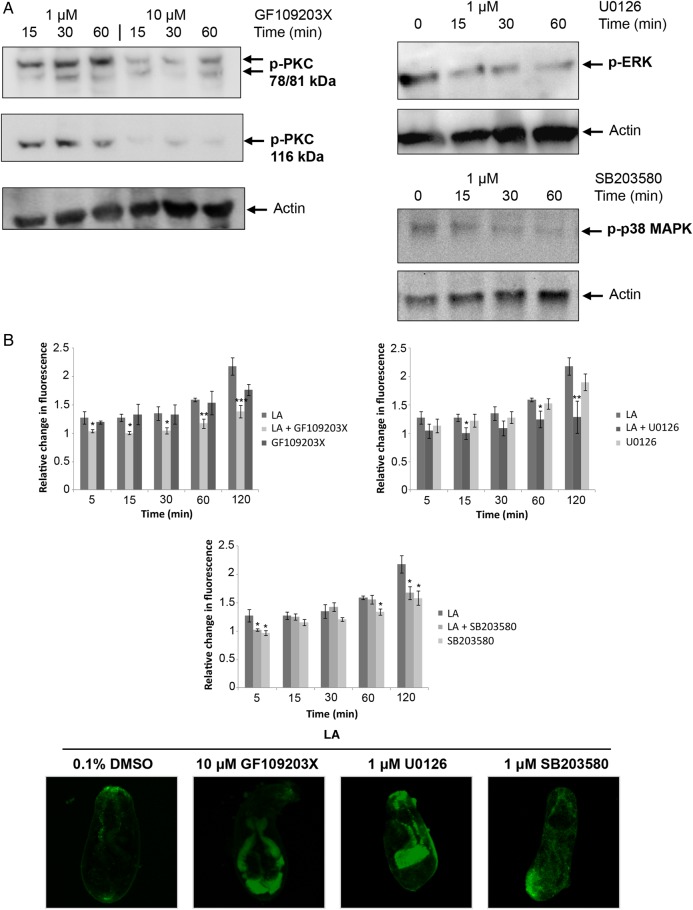Figure 6.
Role for protein kinase C (PKC), extracellular signal–regulated kinase (ERK), and p38 mitogen-activated protein kinase (p38 MAPK) in the release of Schistosoma mansoni cercarial acetabular gland components in response to linoleic acid (LA). A, Cercariae were exposed to 1 µM/10 µM GF109203X, 1 µM U0126, or 1 µM SB203580, and proteins were detected with anti-phospho PKC (ζ Thr410), anti-phospho PKC (βII Ser660), anti-phospho p44/42 MAPK, anti-phospho p38 MAPK, and anti-actin antibodies by Western blotting. Results are representative of 2 independent experiments. B, Cercariae preincubated with carboxyfluorescein diacetate succinimidyl ester with GF109203X (10 µM), U0126 (1 µM), SB203580 (1 µM), or dimethyl sulfoxide (DMSO; vehicle, 0.1%) were or were not exposed to LA, keeping inhibitors present. Mean fluorescence (±standard error of the mean) of the released gland components was then measured over 120 minutes (bottom; n = 3), relative to 0-minute values (control with no LA), which were assigned a value of 1. *P ≤ .05, **P ≤ .01, and ***P ≤ .001, by analysis of variance, when compared to LA. Micrographs (maximum projections of 20 confocal z-sections) show acetabular gland components (green) remaining after 120 minutes of LA exposure in the presence of inhibitors or DMSO and represent results seen in cercariae populations obtained from 3 independent experiments. This figure is available in black and white in print and in color online.

